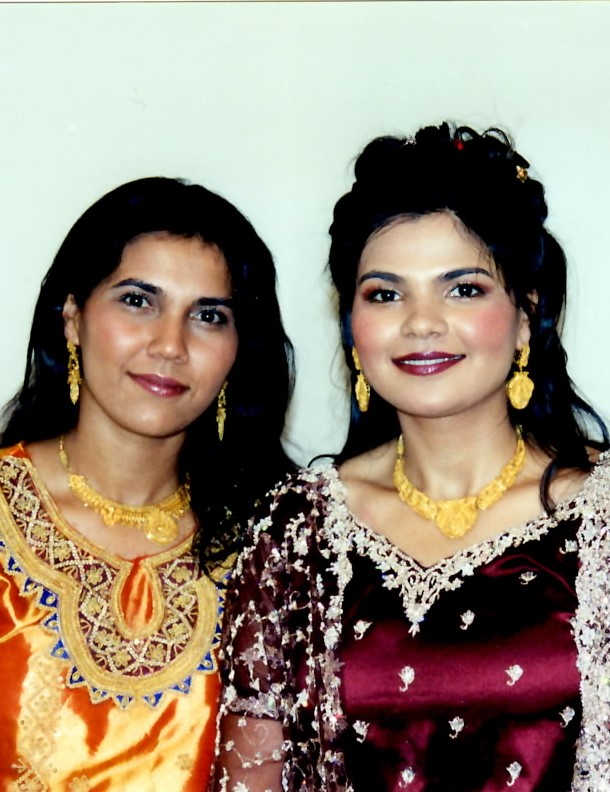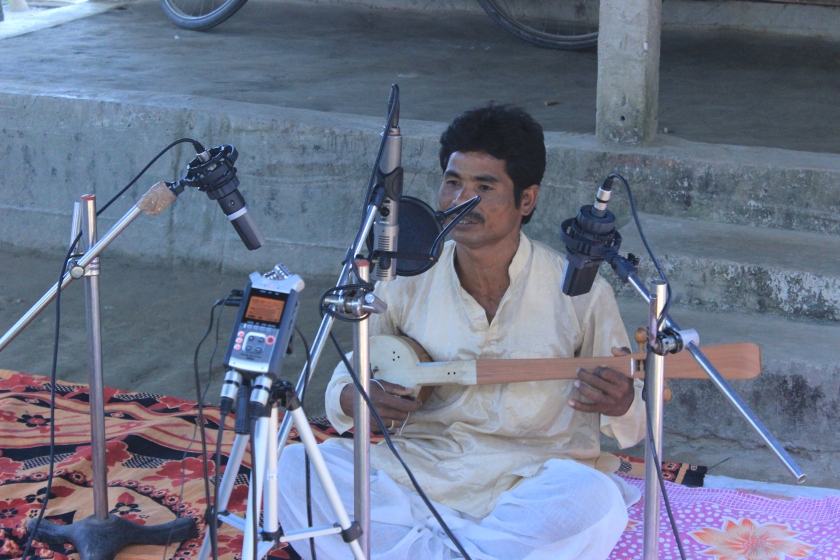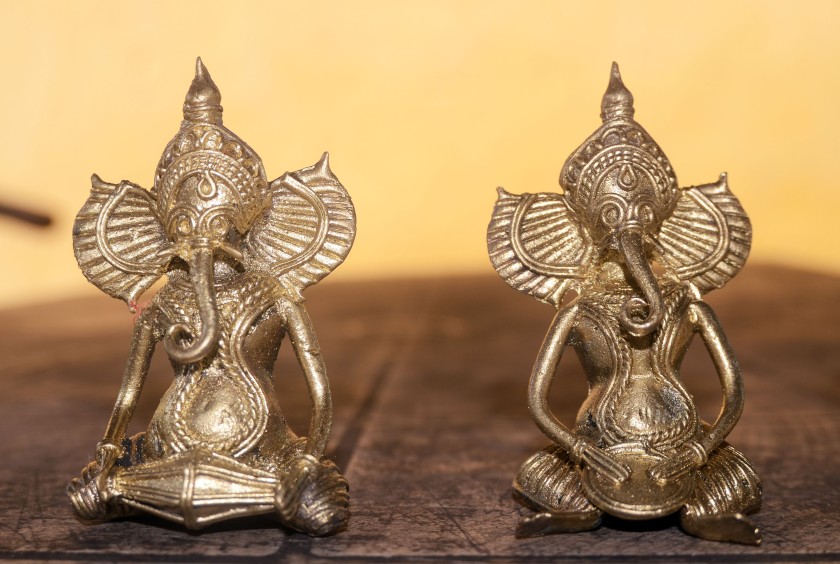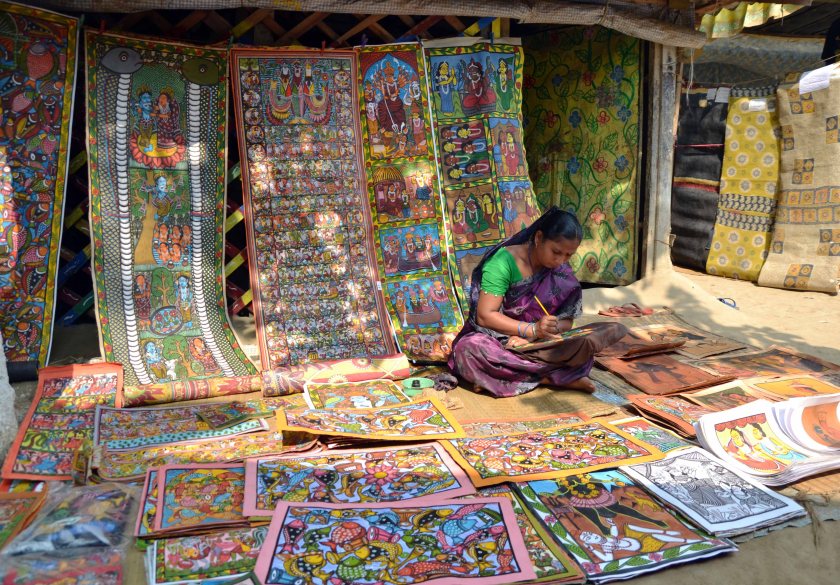As a music practitioner, I have always felt strongly about the importance of collaborative practices and its importance in the process of growth of music. The borderlessness of art practices, if brought into mainstream activities can open up genres to limitless possibilities of exploration through the exchange. Traditional forms often offer age-old knowledge of verbal transfers as well as are open to the dynamism of constant inclusive alterations. Collaborations act as catalysts to this transfer of methodology and create possibilities of the emergence of the third dimension of practice. The confluence of multiple forms of expression opens up avenues through which practitioners can reach out to a bigger arena of possibilities through their own practiced art forms.
I, Soham Mukherjee a musician and passionate photographer working at MusiCal, a wing of banglanatak dot com, a social enterprise based in Kolkata. At MusiCal, I engage with traditional rural and urban musicians of Bengal. This includes coordinating workshops, undertaking field recording of songs and musical instruments, and coordinating the collaboration projects that MusiCal initiates with the musicians and their counterparts from around India and the rest of the world.
Recently, Madagan, a music band of North Ireland, visited West Bengal as part of a residency program hosted by MusiCal. These residency programs, anchored in Kolkata, offer musicians from other lands to tour rural culture and heritage hubs across West Bengal, stay in villages, interact with traditional art and craft communities, and collaborate with local musicians. The experiences create an enriching, and often amazing, soundtracks. The visiting musicians also perform at village festivals and music events in cities.
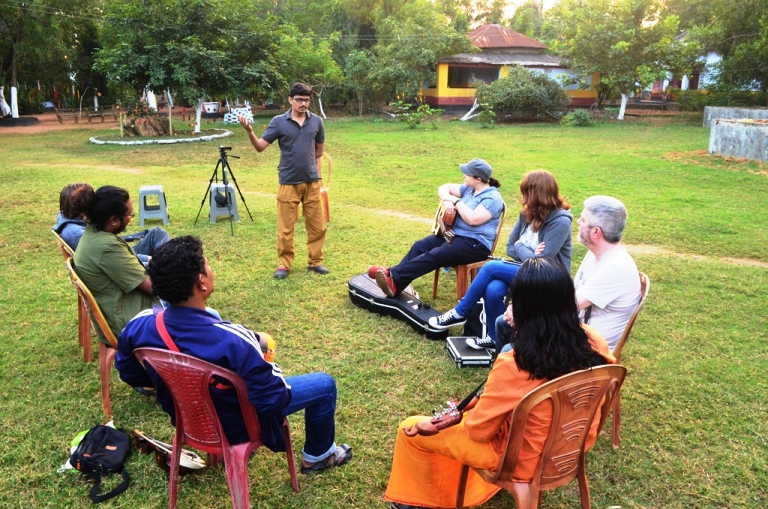
Madagan, a four-member team, collaborated with some traditional artists of West Bengal. Among them were Pradyut Roy, a singer of Bhawaiya folk music genre of north Bengal; Subhankar Das, a traditional singer of Baul folk music genre of south Bengal; and Deepmay Das, a Kolkata-based folk musician.
My assignment during Madagan’s visit included quite a few things. The first of them was to listen to their music and identify a common ground and the missing links before the initiation of the collaborative process. To do this, I needed to explain to the visitors the different Indian scales used by Baul and Bhawaiya musicians and their different rhythm cycles. Through this process, their understanding of rhythm structures, scales and chords came forward to us. The harmonics and chords they used with our traditional music, opened up dimensions. It was interesting to observe the seamless amalgamation of instruments like the Concertina and the Bagpipes with Bengal’s traditional music. These instruments, that are unknown to this part of the world traditionally, complemented with ease the sound and notes of Bengal’s folk songs.

Madagan spent nearly 4 days at Tepantar, a theater village set in a beautiful rural landscape, a 3.5-hour drive from Kolkata. The tranquil ambiance of this green hinterland is perfect for art and music collaborations. We then headed for Muragacha, a village of West Bengal’s traditional puppetry artists. Here, Madagan presented its collaborative music for the first time during their visit. The rural audience enjoyed the new music. Madagan also performed at a music event in Kolkata where they were a completely refreshing experience for the city’s music lovers.
The time I spent together with the four members of Madagan and the creative exchanges we had were educative and enriching, and also humbling. After all, the belief that music transcends all barriers and binds people in bonds of eternal friendship had just got strengthened by the experiences I earned during the course of this visit. I earnestly hope to see more and more such cultural exchanges in the future.

